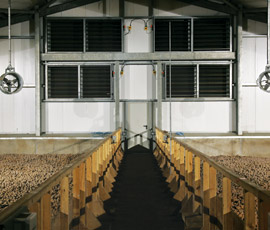Seven checks to avoid CIPC residues in your spuds

The industry group tasked with reducing incidences of the sprout suppressant chlorpropham exceeding maximum limits in potatoes has launched a new initiative aimed at helping secure its long-term future.
The Potato Industry CIPC Stewardship Group came into existence five years ago in response to residues of CIPC in potatoes that were above the Maximum Residue Level (MRL), explains Reuben Morris of Frontier Agriculture.
This season, the group along with Red Tractor Assured Food Standards has introduced a new store checklist. And if a potato store has two red scores on the checklist, it cannot be hot fogged with CIPC, explains Dr Morris.
Checklist
- Store location: Do not apply CIPC when it is windy. Wind “pulls” hot fogged CIPC out of stores, reducing the dose retained on the potatoes. Sheltered stores are less affected by wind.
- Store integrity: Leaks reduce the dose of CIPC retained on the potatoes.
- Empty air space in store: A large head space above the pile/stack reduces the dose retained on the potatoes. Avoid treating part filled stores.
- Application port(s): Are they correctly placed for even distribution the hot fog throughout the fully-loaded store?
- Uniform store environment: Allow enough time after switching refrigeration off for air re-circulation to clear temperature gradients and condensation before fogging.
- Bulk store suitability: Is the flow of the hot fogged CIPC through the potato pile uniform? If not can the flow be balanced?
- Box store suitability: Is the flow of the hot fogged CIPC through the pallet slots even? Do not over-fill boxes as this restricts flow.
Top tips for successful spud storage this autumn

